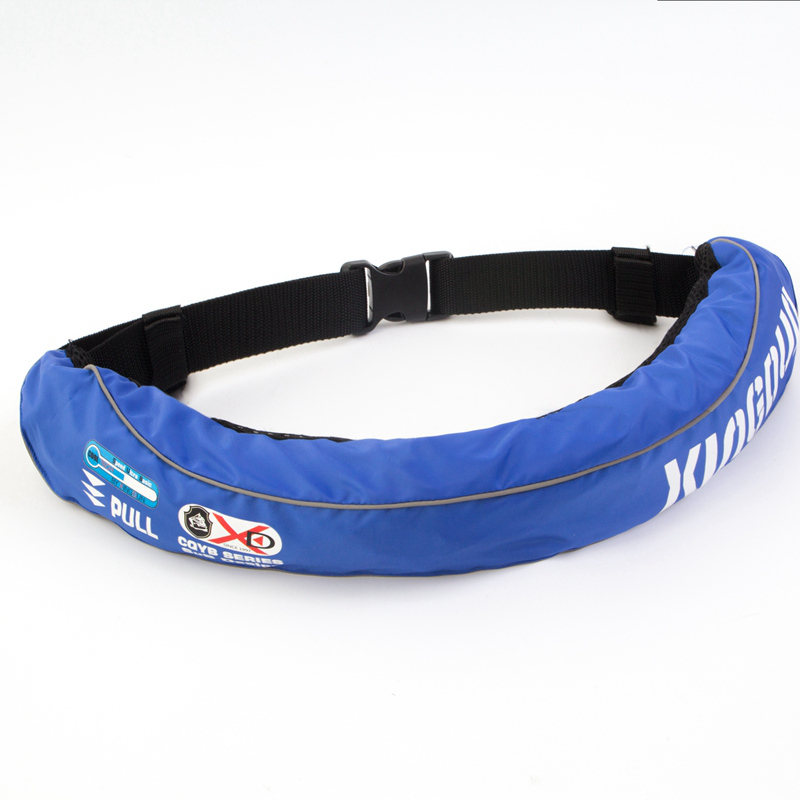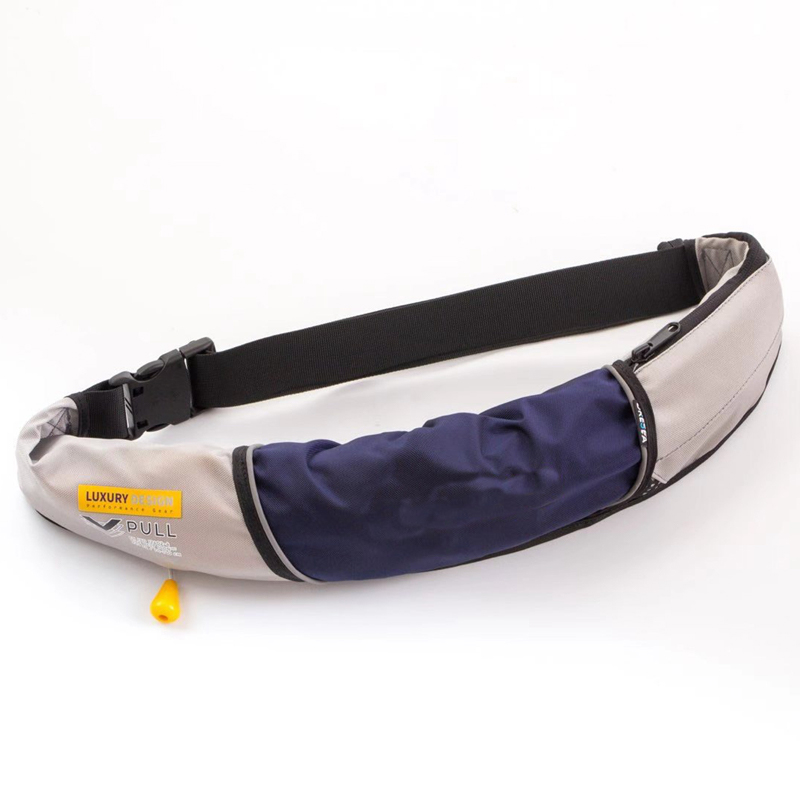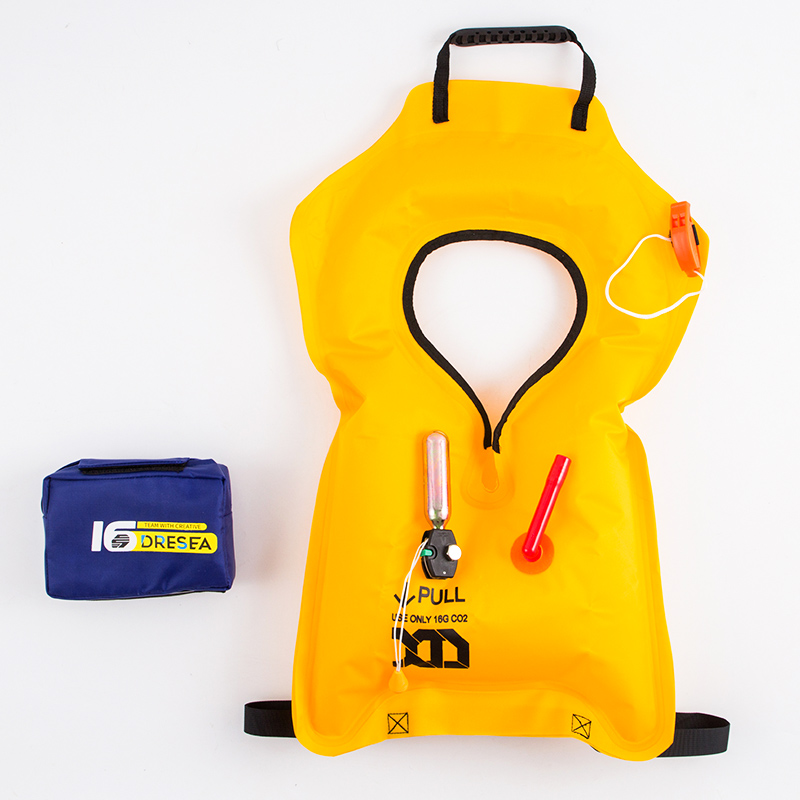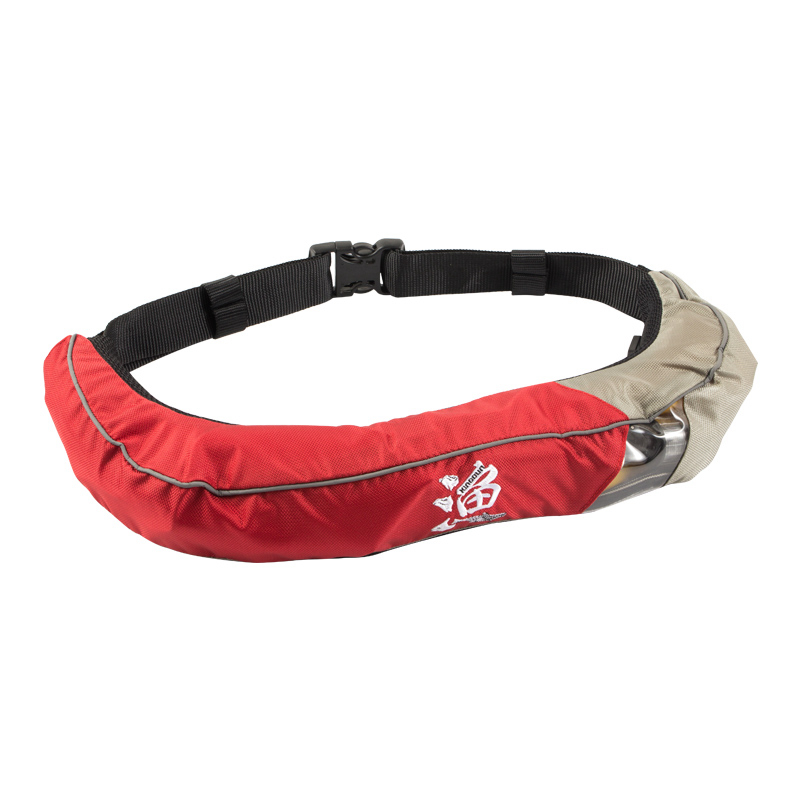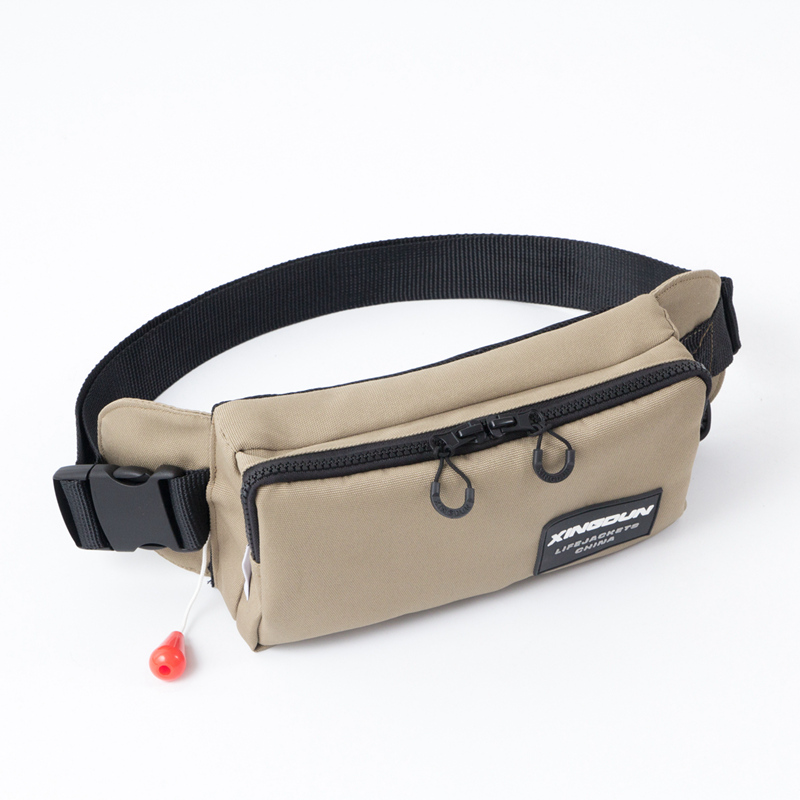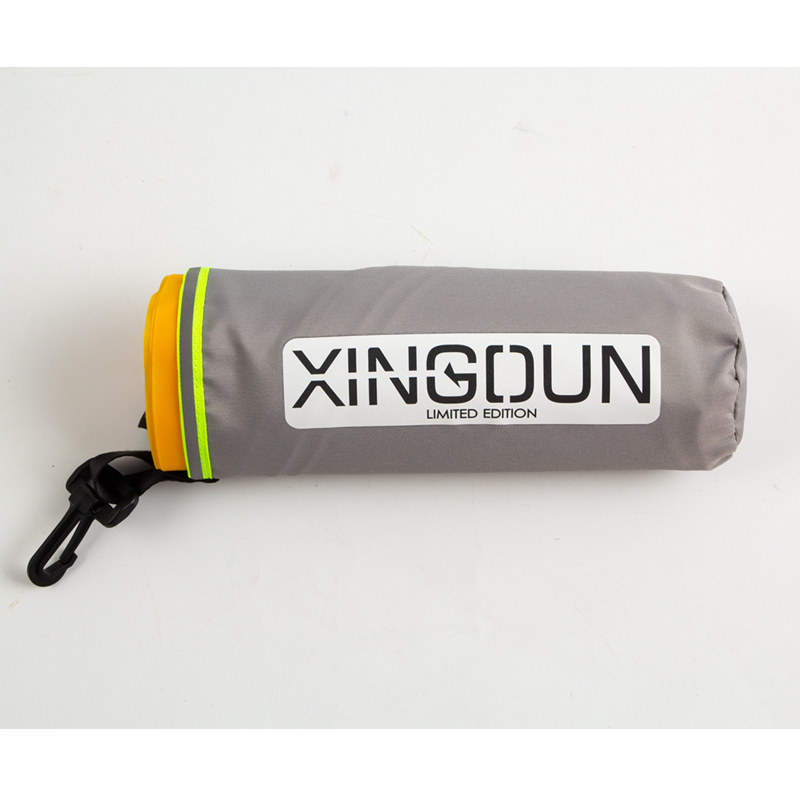Inflatable Life Belt
Inflatable life belt is an ideal choice for experienced swimmers who need a personal flotation device that is not bulky and cumbersome like a vest. They are a great option on calm waters and when you plan to stay close to shore.
They are not meant for high-impact activities like water skiing, tubing, paddling or any high-speed impact water activities. They are also not ideal for cold water or if you are boating by yourself, without other people nearby.
Inflatable Life Belt Models
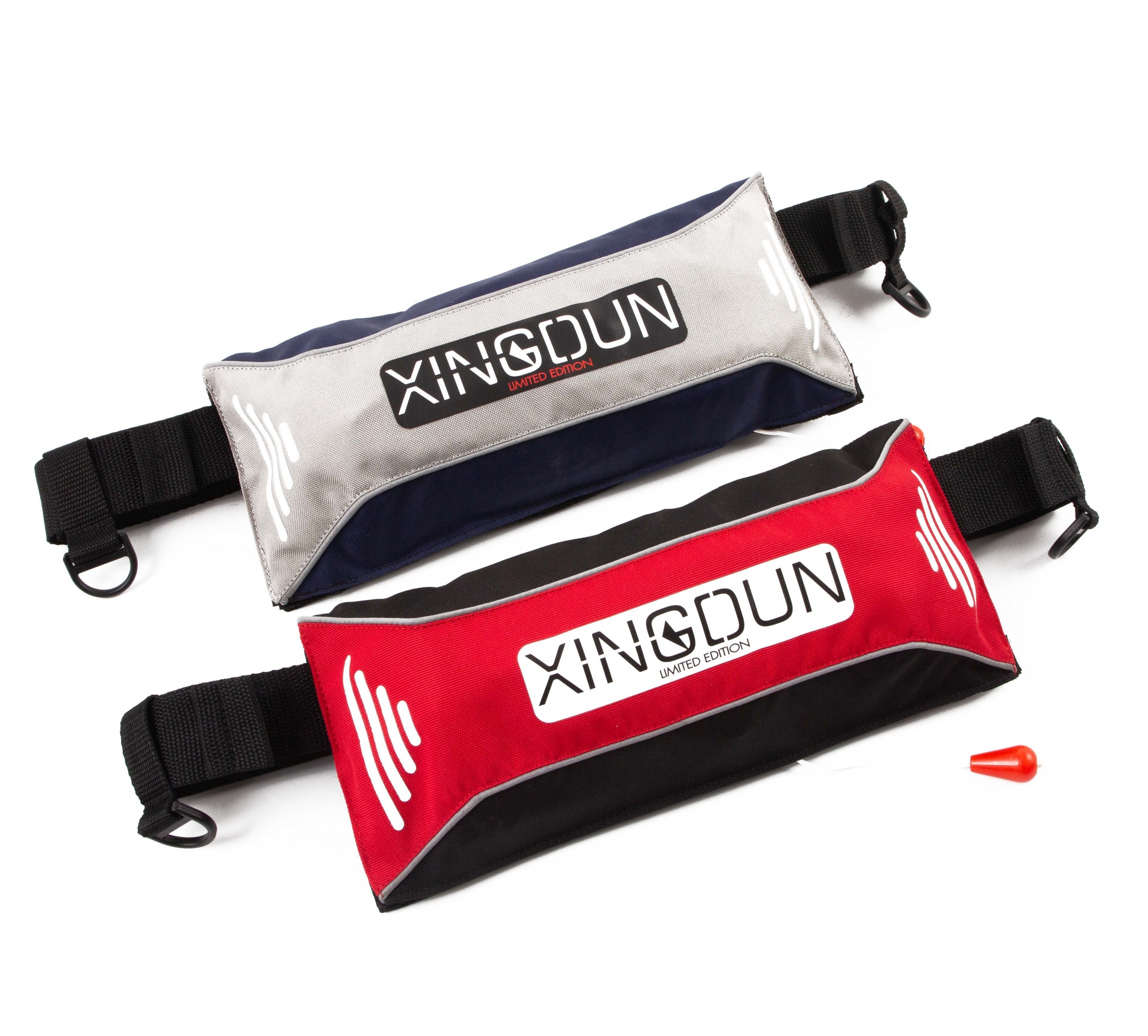
CQYB-100N Inflatable Life Belt
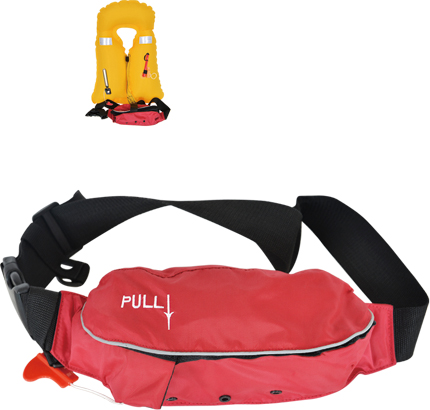
CQYD/V-150N Fanny Pack Life Jacket
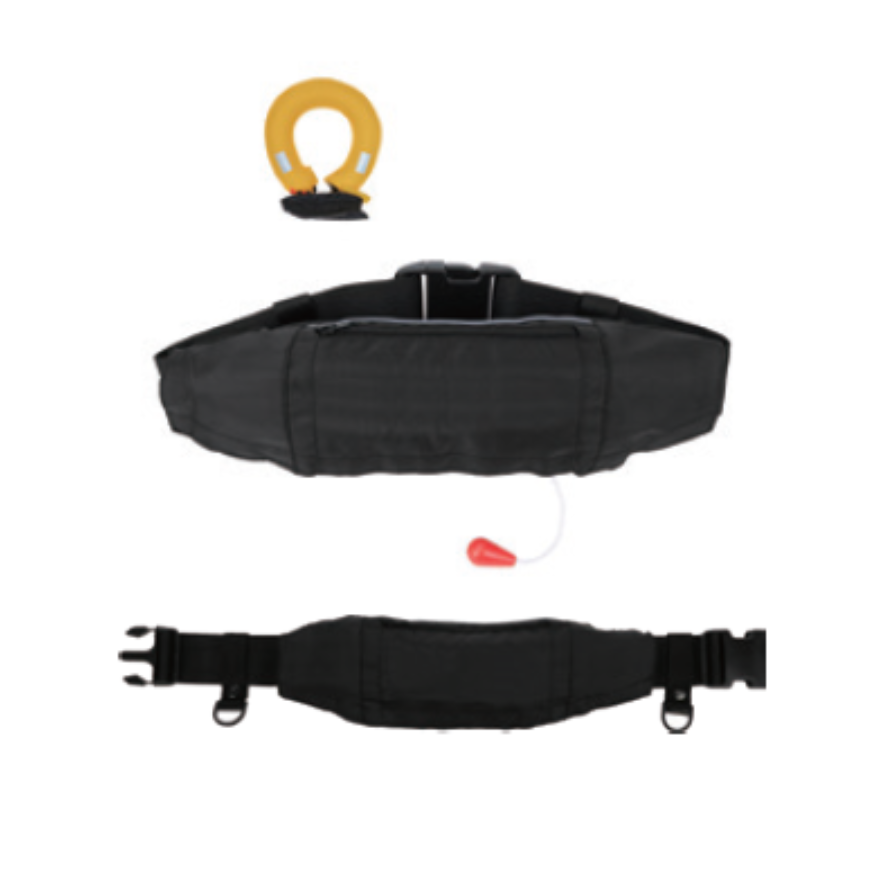
CQYD/VI-100N Fanny Pack Life Belt
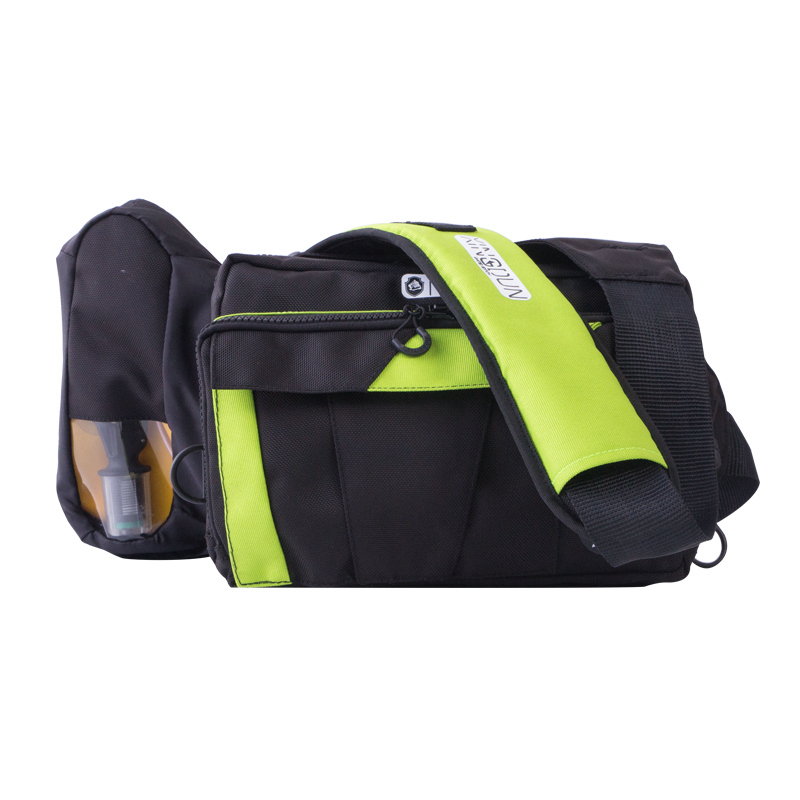
Inflatable Waist PFD
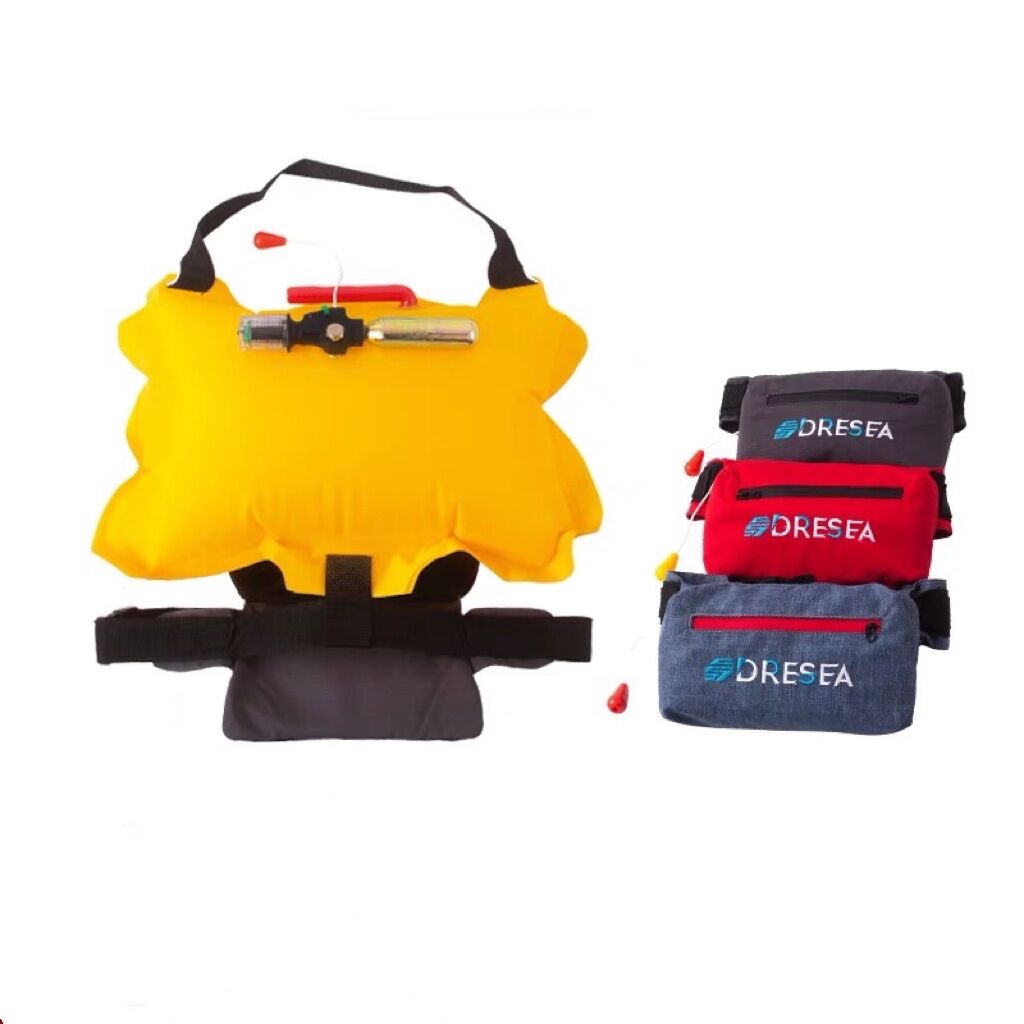
Inflatable Portable Bouyancy Aid
Inflatable Life Belt – The Ultimate FAQs Guide
Hello and welcome to the perfect FAQ guide about inflatable life belts. Following FAQs guide answers the basic queries about the inflatable life belts and clears any misconception or confusion about them.
It will help you to select one for yourself. The maintenance, life span, and working are all explained in the following ultimate FAQ guide.
So, let’s get into it.
1. How Does Inflatable Life Belt Works?
The basic principle of the working of an inflatable life belt is its variable buoyancy. An inflatable life jacket does not keep inflated all the time but only when you need it to be.
The life jacket consists of an outer cover and a waist belt. The crotch strap aids the waist belt, which has an inflatable lung.
The bright-colored inflatable lung is explicitly designed to fill with gas whenever it is needed. The gas makes it buoyant.
The jacket keeps your head above the surface of the water. It keeps you floating on the surface of the water.
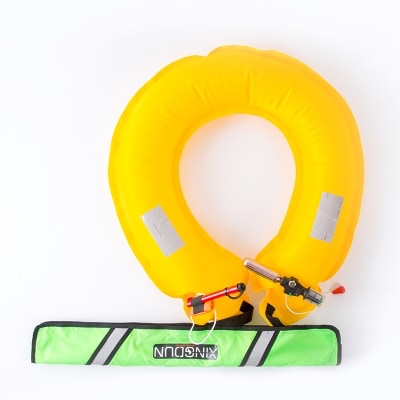
Figure 1: Inflatable Life Belt
2. Does Inflatable Life Belts Save You?
Yes, life belts are the best tool to save you from drowning. But due to their unique sleek design, they might be unable to protect you against hypothermia in the water.
It improves the chance of survival against drowning by almost 80 percent. The inflatable life belts have a unique technique that provides an extra lift.
The filled gas in the life belt has very little weight than the water being displaced. This force applied by the water is upwards and is greater than the downward pressure applied by the life jacket.
Hence the life jacket keeps you floating, saving you from any danger in the water.
3. How Long Do Inflatable Life Belt Last?
There is no expiry date for the life-saving devices, but the inflatable life belt’s life span varies. It depends upon various factors like the quality of gas and that of the life belt as well.
The average life span of the inflatable life belts is from 1 to 3 years depending upon the tank’s replacement dates. You should check for the tank replacement date before buying it. The gas used in these belts, especially those that inflate themselves automatically, is mostly carbon dioxide.
Some good quality automatic inflatable life belts last for five years maximum.
4. Do Inflatable Life Belt Have A Weight Limit?
The life belts are a traditional type of foam that acts as a floatation device. Different life belts have different levels of performance, maximum buoyancy, and several other limitations.
Life jackets are commonly rated by the size of the chest and not by weight. They do not have a specific weight limit.
An inflatable life jacket does not support the weight of the entire body of the user. It only adds some extra pounds that keep him floating on the surface of the water.
Usually, an average person needs seven to twelve extra pounds of buoyancy provided by the life belt independent of the weight of the user’s body.
5. Is It Possible to Swim in Big Waves with The Inflatable Life Belt On?
Yes, it is possible to surf in the big waves with an inflatable life belt on.
All that an inflatable life belt does is keep you floating on the surface of the water when you are dealing with significant water bodies.
Surfing with a life belt on is not highly recommended for beginners, but they still use it.
In big wave surfing or swimming, the inflatable life belt helps bring the surfer to the surface after long hold-downs.
Sometimes during swimming in big waves, the rip currents take swimmers far from the shore that might increase their chance of drowning. Under such circumstances, an inflatable life belt can save you from the risk.
6. How to Repack Your Inflatable Life Belt?
Following steps are taken to repack an inflatable life belt:
- First of all, deflate the life belt. Remove and invert the cap on the inflation tube. Compress the air out. When the belt is fully reduced, put the cap back onto the valve.
- Keep the belt on a smooth, clean surface and remove any air present in the chamber or the belt.
- Replace the gas cylinder.
- While folding the belt, you must fold the side with the gas cartridge first. Then fold the air chamber in a managed way. You should check the pull cord to prevent it from being trapped under the airbag.
- When the belt is done halfway down, fold over the belt and tape it. The first half side will be closed.
- Repeat the same folding procedure, take it down to the second end of the belt, and tap it to close it.
7. When to Use an Inflatable Life Belt?
Inflatable life belts have now become a significant replacement for life jackets. When you are near the water, we recommend you wear a life belt.
It would help if you did not use them for high-impact activities like water skiing or tubing. You must wear them when you are in an open boat.

Figure 2: inflatable life belts models
However, if the boat is not open, you must use them on Deck or in the cockpit. You can also wear them during swimming and surfing.
We do not suggest inflatable life belts for people younger than 16 years or who weigh less than 36 kgs. Although not much recommended for beginners, but they are in use on a big scale.
8. How Adjustable Inflatable Life Belt Fits Waists From?
You can choose the inflatable life belts according to the chest size and not weight. Follow these steps to get the right fit:
Turn all the straps loose and then put the life belt on. Zip it up.
Since the belt is inflatable, put it over your head. The belt might have two types of straps; the waist straps and the shoulder straps. First tighten the waist straps and then the shoulder ones. Make sure that you have pulled the straps according to your exact size. It should not be uncomfortably too tight.
Tighten the straps if the belt moves up past your head upon pulling it on the shoulders.
9. What is the Best Inflatable Life Belt For SUP?
The best professional inflatable life belts for SUP are made by the most reliable manufacturer factory in China named Xingdun Marine.
The most recommended life belts are the ones that inflate automatically.
10. Do You Need to Wear an Inflatable Life Belt on A Paddleboard?
Yes, we will suggest you wear a life-saving device when you are in the water either for swimming or on a boat.
However, being on a paddleboard, an inflatable life belt is not recommended. Inflatable life belts help keep the head above the surface of the water. Therefore, it is not helpful in the practices that do not require only the head above the surface.

Figure 3: Paddle Boarding With Life Belt On
The inflatable life belt is not for high-impact activities like paddleboarding. Paddleboarding is a more superior level skill, and it requires high practice. A life jacket can be helpful in this sport.
11. Do Inflatable Life Belt Have to Be Worn?
Yes, inflatable life belts are an easy-to-wear life-saving device. The most significant advantage of an inflatable life belt is that it can be easily worn all day long without feeling heavy. It does not cover the whole body; therefore, it does not cause sweating, and the boaters can carry them comfortably.
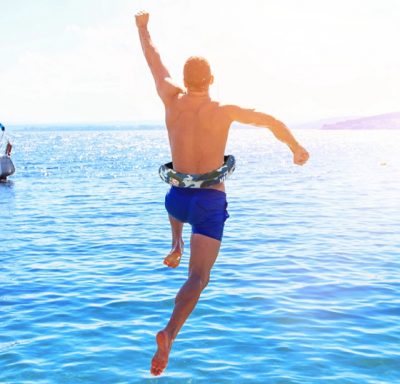
Figure 4: how to wear an Inflatable Life Belt
However, inflatable life belts are not recommended for people under the age of 16 years because they might not handle them. People suffering from anxiety and beginners must not wear manual inflatable life belts.
12. Is There Any Difference Between an Automatic Inflatable Life Belt and A Manual Life Belt?
The main difference between an automatic inflatable life belt and a manual life belt is the inflation system.
You can inflate the manual inflatable life belt according to your need. You can pull the cord with the handle.
The handle requires a sharp pull to initiate the inflation. This type of belt is suitable for many people, but this is usually less recommended because if you lose consciousness or panic, there might not be enough energy to trigger the inflation. It might get quite dangerous.
The automatic inflatable life belts have a specific specialized mechanism in which the firing pin is kept at a distance from the gas container with a pill’s help. As the water touches it, it dissolves, and the gas starts to fill in the belt. As a result, the belt inflates, and the wearer begins to float on the surface of the water.
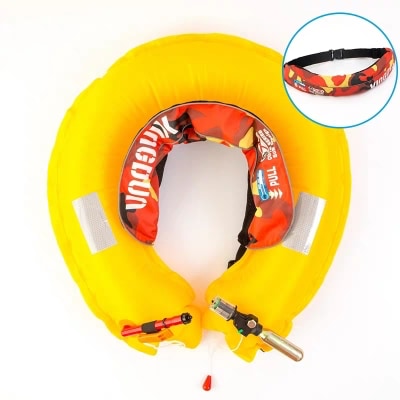
Figure 5: Automatic Inflatable Life Belt
13. Is the Child Pack Is Available in Life Belt Works?
Yes, there are inflatable life belts available in the child pack for children. We will not recommend life belts for children under 16-year, but still, many people use them for swimming in smaller pools or ponds.
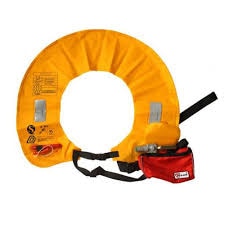
Figure 6: Life Belt For Children
The adult-sized life belts are entirely useless and, in fact, dangerous to use with children. Many companies have made unique small-sized belts that work.
If you wear the inflatable life belt accurately, then they fit very comfortably. The snuggle fit life belt does not surpass the chin or ears and keeps the children safe during swimming.
14. How to Select the Best Inflatable Life Belt?
Selecting the best inflatable life belt is an important step. Keep check of Some factors before buying the inflatable life belt:
- The inflatable life belts must be comfortable to wear. With their slim design, they must fit easily, being neither too tight nor too loose.
- The belt should have a firm grip on you but still, let you move freely while swimming or paddling.
- The life belts must not cover a more significant portion of your body so they can keep you in a good state on a hot summer day.
- You should check the inflation method of the belt, whether it’s manual or automated.
- There should not be even a minor hole in the belt because it might cause greater risk.

Figure 7 best inflatable life belts
15. How Well the Inflatable Life Belt Holds You Up in The Water?
The inflatable life belts help a lot in holding the wearer on the surface of the water. They provide some extra lift to the body.
The weight they carry is much lighter than the water’s density; therefore, they keep your body floating over the surface of the water. Hence, it prevents you from drowning.
It is estimated that an average person can survive up to 3 days in water if he has some lifebelt or life jacket on. However, life belts do not help in cold water. They might get a leak in the belt or the gas cartridge. If the life belt leaks even a little, it can cause drastic effects.
The lifebelt provides enough buoyancy that makes you float over the surface of the water without sinking.
16. When Should You Not Use an Inflatable Life Belt?
Inflatable life belts are a perfect choice for swimmers who are experts to wade in the sea. The inflatable flotation device is very light weighted, and it does not cover the entire body, so that we will recommend it for expert swimmers only. It can be controlled by expert swimmers only as it gives them a good hold on big water bodies.
However, we will not recommend it for high-impact activities. High-impact activities usually include water skiing, tubing, paddle boating, or other water activities like surfing.
The life belts are not ideal for working in cold water. They are also not recommended if you are boating alone in the water without any people nearby to help you.
Inflatable life belts are also not recommended for people who weigh less than 36 kgs.
Children shall not use Inflatable life belts under the age of 16-years. Use for people with some anxiety problem, and the life belt is strictly prohibited.
17. When Should You Replace the CO2 Cylinder in An Inflatable Life Belt?
The gas-filled in the life belts is carbon dioxide. The CO2 cartridge is the main reason for the floatation of the wearer. The cartridge is an auto-inflating floatation device. You need to replace it if it gets leaked or punctured.
The puncture usually occurs when the manual lever is used to inflate the life belt. You should properly check the life belts before entering the water. If there is a minor cut, you should discard the belt immediately because it increases drowning risk.
The replacement is merely removing the previously punctured cylinder and then adding the new one into the belt.
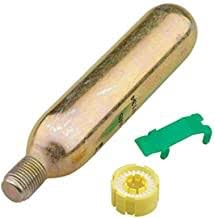
Figure 8: A CO2 Gas Cartridge
18. What Are the Applications of The Inflatable Life Belt?
- Inflated life belts are used for swimming by expert swimmers.
- The Inflated Life belts can be used when traveling on a boat, but it should be ensured that there are other people with you on the ship that can save you from drowning.
- Inflated Life belts must be used when the wearer is sitting on the Deck or running the boat.
- An inflated Life belt is used by people who are afraid to go into the water or have some anxiety problem.
- Inflated Life but belts increase the survival chances by drowning up to 80%
- The Inflated life belts are used by people involved in some recreational activities in the water like fishing, sailing, kayaking, and canoeing.
- Inflated life belts are also used for various commercial purposes.
19. Are Inflatable Life Belt Difficult to Put on In Water?
Once you have worn the inflatable life belt, it becomes challenging for the belt to slip off the body. When you are in the water, it is harder for the inflatable life belt to put on.
The boaters need to be smarter and get everyone on the board to wear their life belts very carefully and tightly.
Drowning is the primary cause of death of visitors in or near the water. The lifebelt keeps you safe from drowning as it is a challenging task for the belt to put on in the water.
20. How Should You Check an Inflatable Life Belt to See If It Is in Good Condition?
To ensure the best performance in the water, you must check the life belt regularly. Following are some essential points that you must check before wearing an inflatable life belt:
- Check for any damage done to the life belt. It might be in the form of any tears, holes, cracks, or rips. If there is even a minor cut or bruise, eliminate the life belt.
- There must be no water logging in the belt. If you think that the life belt gets saturated when used in water, this belt might absorb water, and instead of giving some lift, it might provide some extra weight in the downward direction and cause the person to drown.
- You must adequately check any air leakage before using an inflatable life belt. It is done by squeezing the belt from different areas.
- Check for any molds or marks of absorbed water on the belt. Consider it an indication of the belt is no longer viable.
- The buoyancy is the actual helpful thing that makes the life belt work. Check for the material carefully and keep a sharp eye on its buoyancy.
21. Why Are Inflatable Life Belts Not Recommended for Non-Swimmers?
Inflatable life belts, either manual or automatic, take time to inflate when you dive into the water.
If a person is a non-swimmer, a beginner, or a child, he might not cope with the pressure that comes during the period of inflation of the life belt. So, he might get a panic attack or lose consciousness.
If the belt is manually inflatable, he might not be able to apply enough pressure to trigger the inflation and hence get drowned.
Moreover, the sleek design of the inflatable life belt gives little or no protection against hyperthermia. The wearer’s body might get hot due to any reason. The after-effects of swimming in hot water might also be dangerous.
22. Is It Illegal to Not Wear A Personal Flotation Inflatable Life Belt?
No, it is not illegal to wear an inflatable life belt for safety purposes. However, it has some legal requirements that you must fulfill. The most basic legal requirements are:
- The life belt must accurately be the user’s size, so there are no chances of death or drowning.
- The USCG must approve the inflatable life belt. The approval is labeled on the belt.
23. How Belt Pack Manual Inflatable Life Jacket Works?
The manual inflatable life jackets work by filling carbon dioxide gas in the jacket that adds buoyancy and some extra lift to the wearer to keep him floating on the surface of the water.
The carbon dioxide cylinder is filled with gas when the trigger is pulled with enough strength to open the valve. Once the jacket becomes filled with gas, it brings the wearer floating on the surface of the water.
The belts of the life jacket are tightened following the complete rules. The belts of the waist are pulled first, and the ones on the shoulder are done afterward.
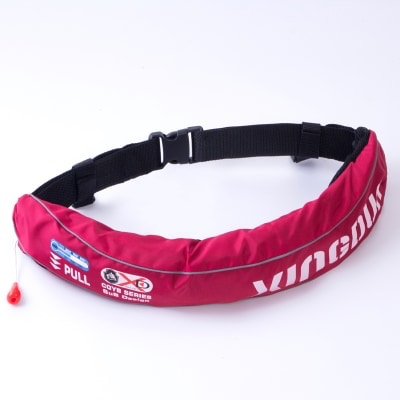
Figure 9: Manual Belt Pack Inflatable Life Jacket
24. Who Can Use Belt Pack Inflatable Life Belt?
- The belt pack inflatable life belts can be used by expert swimmers only as they are practiced enough to handle them.
- The people on the Deck of the ship or the ones driving the boat can use it.
- People over the age of 16 years are allowed to wear it under supervision.
- Sometimes, paddlers in warm water can also wear it.



